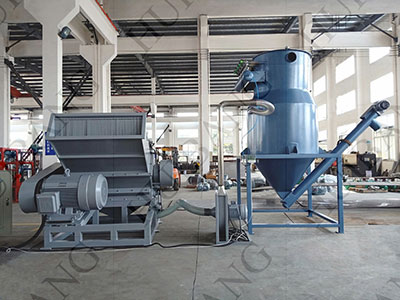Dust and fines are caused by dull knives, and improperly gapped knives. Additionally, plugged screens, excessive rotor speed, and screen holes that are too small.
Dust and fines can result in conveying problems such as bridging or rat-holing. Thus preventing all the material from being evacuated from the granulator discharge bin.
Besides build-up in the feed hopper that can block the discharge, and clogged filters that reduce the ability to convey material are all problems caused by dust and fines.
Immediately the regrind gets back into your process, other problems such as black specks can occur. This is because dust and fines flux faster than virgin pellets, and may destroy faster.
Dust and fines thus increase rejects and add cost for inspection to identify bad parts. Every processor using regrind has encountered these problems at one time or the other.
However, for a granulator machine with free dust, fines, and longs associated problems, you need a piece of expert advice from a professional granulator machine manufacturer.
Below is some highlight on how to eliminate or at least minimize dust, fines, and longs.
1. Monitor Your Regrind
You can quickly monitor the quality of regrind by examining the size consistency of the regrind. In other words, are the pieces roughly the same size?
Also, you can ask your quality-assurance team to perform a simple sieve test to ascertain the material size.
Granulator machine manufacturers can be contacted by sending some sample parts, runners, tabs, and tails, along with complete application information (including the type of material and feeding rates).
This helps to determine the type of granulator that is best for your application.

2. Screened Versus Screenless
The operator has less to do in regards to the design of the granulator. Although, there are few simple adjustments that can be done to quickly reduce the amount of dust, fines, and longs in your regrind.
However, you need to identify some of the fundamental differences between screened and screenless granulators.
Also, some specific problems are associated with each, just to determine the preventive maintenance that is required.
The screened granulators come with a sizing screen, rotor speed of 200 to 600 rpm, the motor of 3 to 15 hp, and an output of 125 to 150 lb/hr.
While screenless versions have no sizing screen, rotor speed of around 30 rpm, 1 to 3 hp, and output of 25 lb/hr.
Longs normally occur when pieces of scrap slip through a screen before there have been sufficiently reduced in size.
This problem can be eliminated with the use of a screenless granulator if the application fits.
But in a scenario where screened granulator is preferred, the size must be reduced to match the screen holes. Although, this may affect the output.
However, you can slow the rotor speed along with reducing screen-hole diameter will minimize or eliminate longs without increasing fines.
3. When knives don’t cut it
Dull or improperly gapped knives are another reason for dust and fines. In other words, the sharper the knives, the more efficiently the granulator will chop the scrap.
This happened most especially with soft, energy-absorbing materials. Sharp knives will produce a cleaner cut without a tear, resulting in greater energy efficiency, fewer fines, and higher output.
However, older granulators were not designed to facilitate easy knife changes. Moreover, the modern granulator machine manufacturer designed a granulator to facilitate knife changes.
More so, knife-gap pre-adjustment fixtures and fast access to cutting chambers are important features that make it easier to routinely change knives. This improves regrind quality.
When knives are properly gapped on a screened granulator, and cutters on a bag of screenless granulator dust and fines are minimized. In addition to maximizing energy efficiency and output.
This is important when cutting energy-absorbing materials. Both rotating and stationary knives should have adjustable gaps.
This is true for both screened and screenless granulators.
Conclusion
Proper monitoring of the regrind, the type of the granulator screens, and the sharpness of the gapped knives are potential steps to take in eliminating dust, fines, and longs for better regrind quality.
However, for modern granulators that enable knives changing you need to team up with a reputable and reliable granulator machine manufacturer for your best deal.
By continuing to use the site you agree to our privacy policy Terms and Conditions.